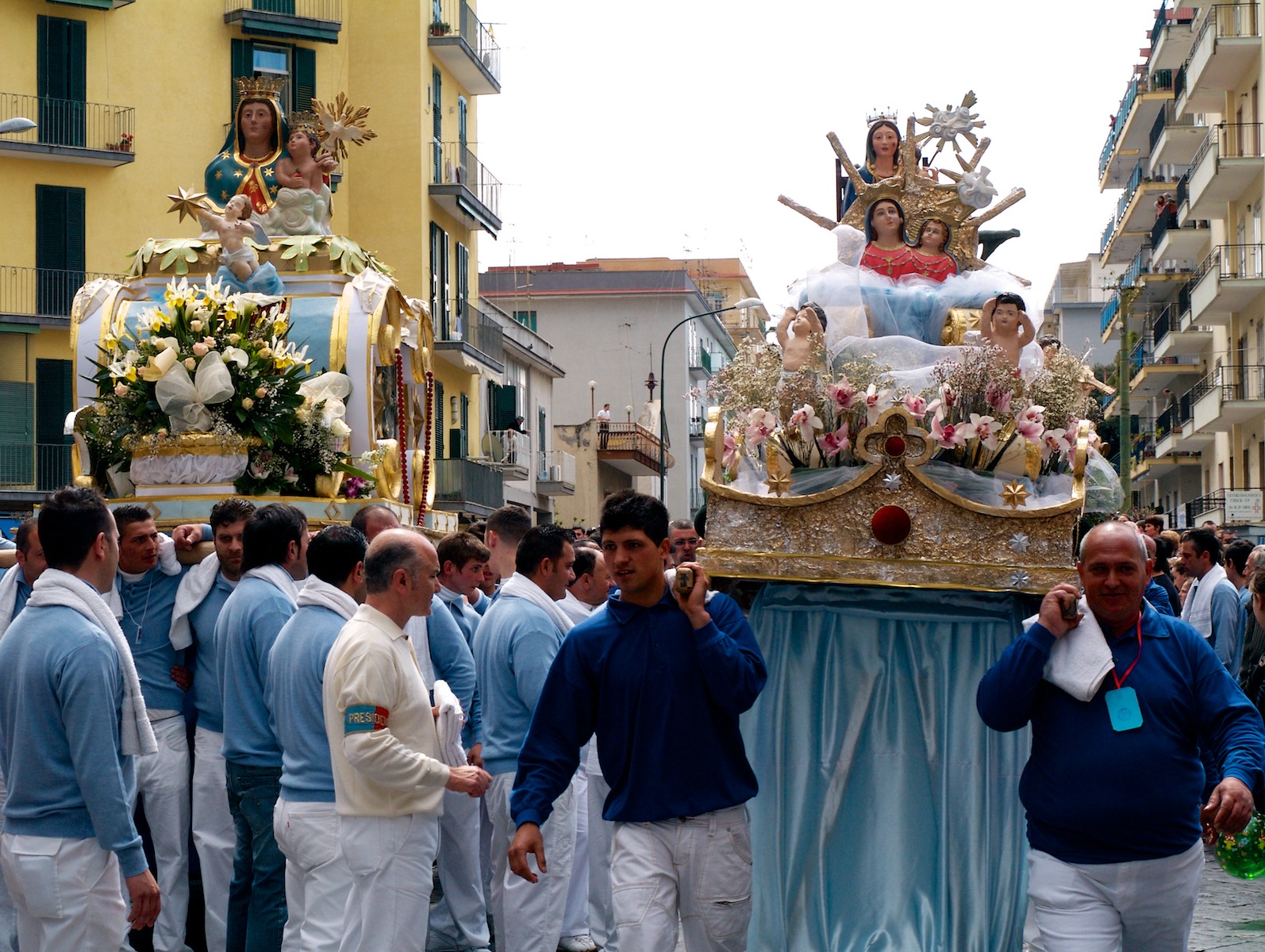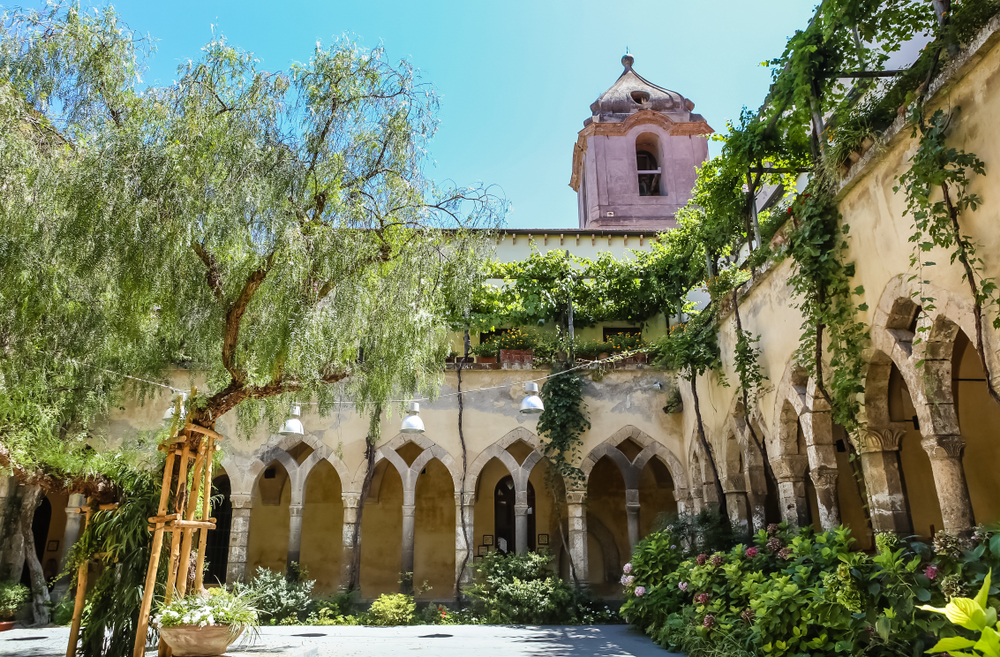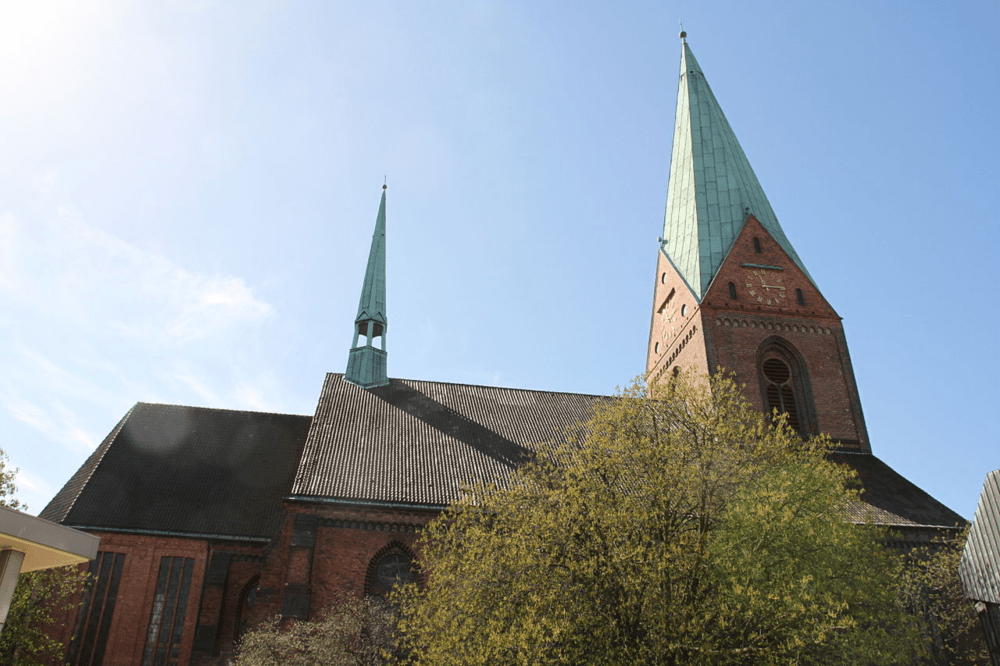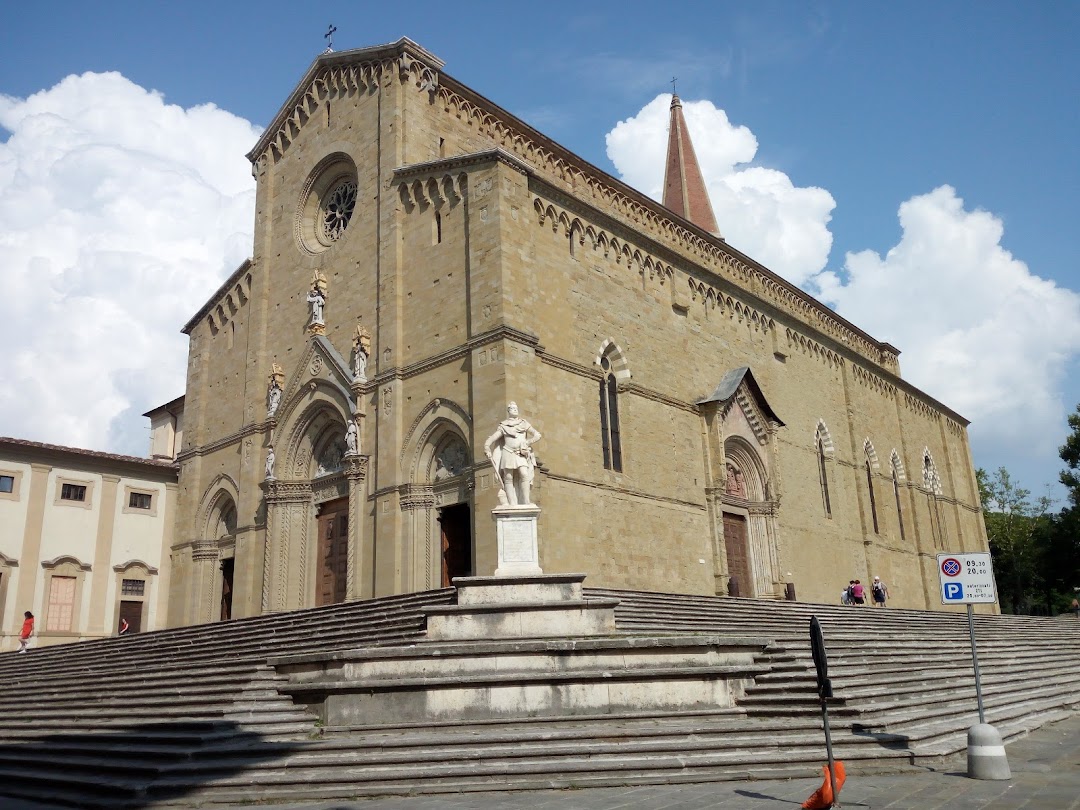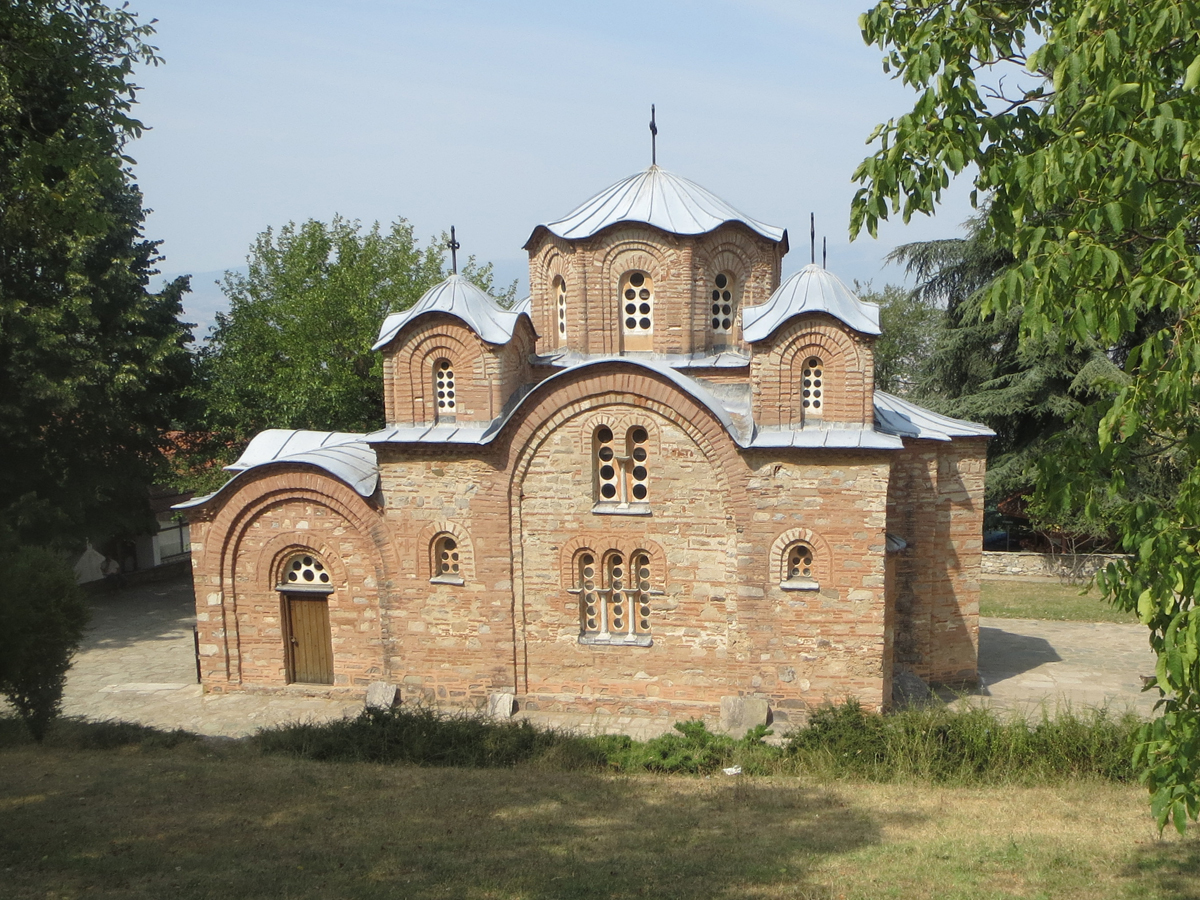Among the many Sanctuaries that dot the Italian territory, dedicated to the Madonna and among the many titles that have been attributed to her during the centuries, there is one that venerates her under the title of Madonna dell’Arco.
The homonymous Sanctuary and the popular cult dedicated to it are part of the three major poles of the Marian devotion in Campania: Madonna del Rosario di Pompei, Madonna di Montevergine and Madonna dell’Arco.
The beginning of the cult is linked to an episode that occurred in the mid-fifteenth century, it was an Easter Monday, the day of the so-called ‘Easter Monday’, that is the famous trip out of town once and near Pomigliano d’Arco, some young people were playing in a field to "palla a maglio", today we would say bowls; at the edge of the field stood a shrine on which was painted an image of the Madonna and Child Jesus, but more properly it was painted under an aqueduct arch; from these arches come the names Madonna dell’Arco and Pomigliano d’Arco.
During the game, the ball ended up against an old linden tree, whose branches partly covered the frescoed wall. The player who had made a mistake in the game lost the game; in a fit of rage, the young man picked up the ball again and cursing, hurled it violently against the sacred image, hitting it on the cheek which began to bleed.
The news of the miracle spread in the area, reaching the Count of Sarno, a local nobleman, with the task of ‘executioner’, behind the fury of the people, the count drew up a process against the young blasphemer, condemning him to hanging.
The sentence was immediately carried out and the young man was hanged from the linden tree near the kiosk, but two hours later, still with his body dangling, he dried up under the gaze of the astonished crowd.
This miraculous episode aroused the cult of Our Lady of the Arch, which immediately spread throughout southern Italy, crowds of faithful flocked to the place of the miracle, so it was necessary to build with the offerings of the faithful, a chapel to protect the sacred image from the weather.
A century later on April 2, 1589, occurred a second prodigious episode, this time was also a Monday after Easter, now consecrated to the feast of Our Lady of the Arch and a woman certain Aurelia Del Prete, who from the nearby S. Anastasia, today’s municipality to which belongs the area of Madonna dell’Arco, was going to the chapel to thank the Madonna, thus dissolving a vow made by her husband, healed from a serious eye disease.
While slowly advancing in the crowd of believers, she escaped from the hand of a piglet that she had bought at the fair, trying to take it, slipping between the legs of the people, she had an unconscious reaction, arrived in front of the church, threw on the ground the ex-voto of her husband, stepped on it cursing the sacred image, who had painted it and who worshipped it.
The crowd was horrified, her husband tried in vain to stop her, threatening her with the fall of her feet, with which she had desecrated the vow to Our Lady; his words were prophetic, the unfortunate woman began to have excruciating pain in her feet that were swollen and blackened as far as the eye could see.
In the night between 20 and 21 April 1590, the night of Good Friday, ‘without more pain and without a drop of blood’ one foot came off and during the day the other one too. The feet were exposed in an iron cage and are still visible in the Sanctuary, because the great resonance of the event, made flow a large crowd of pilgrims, devotees, curious, who wanted to see them, with them came the offerings, it was necessary to build a large church, which was appointed rector s. John Leonardi by Pope Clement VIII.
On May 1, 1593 the first stone of the present Sanctuary was laid and already the following year the Dominican fathers took over to manage it and still do. The temple was built all around the chapel of the Madonna, which was also restored and embellished with marble in 1621, the image after this work, was partly covered by a marble, so that throughout this time and remained visible only the upper part of the fresco, the half-bust of the Madonna and Child, recent work has brought to light and the veneration of the faithful the entire image.
Various prodigies have been repeated around the sacred effigy, which resumed bleeding in 1638 for several days, in 1675 it was seen surrounded by stars, a phenomenon also observed by Pope Benedict XIII.
The Sanctuary collects in its halls and on the walls, thousands of silver votive offerings, but above all thousands of painted votive tablets, representing the miracles received by the offerers, which constitute not only the testimony of devotion, but also a very interesting historical overview of the past centuries.
The cult of Our Lady of the Arch is supported by ancient popular devotion, propagated by lay associations, scattered throughout the area of Campania, but especially in Naples, its members are called ‘battenti’ or ‘fujenti’ that is, those who flee, run, the companies of these devotees are called ‘paranze’ and have an organization with headquarters, presidents, treasurers, flag bearers and members.
They have flags, labarums, dress in white, men, women and children, with a red and blue sash on their shoulder, which characterizes them. They organize pilgrimages, usually on Monday of the Angel, starting from the various places where they are based, carrying simulacra on their shoulders large enough to employ thirty, forty men and always all on foot and sometimes running, traveling many miles to converge at the Shrine, many are barefoot, along the way collect offerings for the Shrine, which already do a couple of months before, turning groups with flags, band and devotional clothes for districts, neighborhoods and streets of cities and towns.
But if the Sanctuary with the annexed grandiose convent of the Dominicans is the center of the cult, in many streets and corners of Naples and of the Campanian towns, there are chapels, aedicules, churches dedicated to the Madonna of the Arch, that everyone takes charge of guarding, taking care of and embellishing, so as to continue the devotion all year round and close to home.
(Taken from Santibeati.it Author: Antonio Borrelli )
